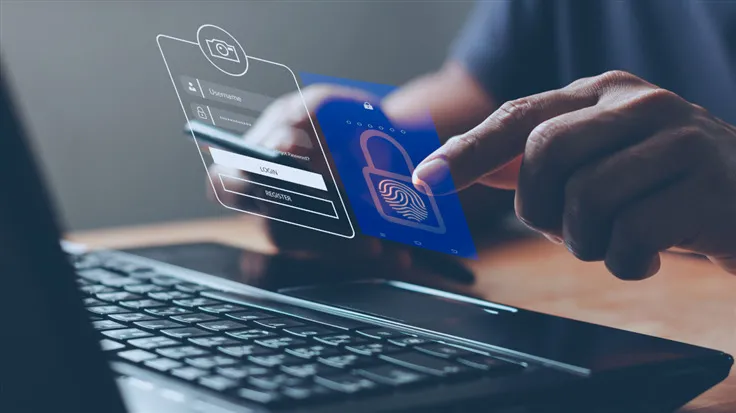Remembering and maintaining complex and long passwords for digital accounts is a real struggle. The process often gets frustrating and tiresome, stressing the necessity for a convenient and easily accessible approach. Most crucially, passwords are no longer considered secure and reliable, as they are prone to hacking and spoofing. Cybercriminals use phishing, and social engineering, and conduct breaches to access your passwords. So, is there a way that offers security as well as increases user satisfaction? Certainly, there is. Biometric authentication is an advanced ID verification method that validates the identity of a person by analyzing unique biological traits such as fingerprints, face, voice, and iris or retina patterns.
How Biometric Authentication is Secure & Reliable?
Online biometric verification accurately validates the identity of a person by analyzing the biometric information and matching it against the registered identities to ensure that only legitimate persons are granted access. At the same time, the biometric authentication system actively flags spoofed attempts or mask attacks by looking for anomalies or inconsistencies and restricts access to systems, lowering the risk of fraudulent activities.
Most crucially, biometric authentication online offers enhanced convenience and seamless accessibility to users, enabling them to prove their identities in a matter of seconds just by scanning their biometrics.
Real-Life Use Cases
Each individual carries distinct physiological or behavioral traits, which makes them distinguishable from other individuals. Biometric verification offers a compelling and reliable alternative to passwords, making it challenging for fraudsters to replicate or spoof biometric data. As most of the services have transitioned online, verification of individuals based on their unique biometrics ensures that only genuine individuals are getting access to services or systems.
1. Secure Identity Verification
It’s paramount to filter who is who particularly during online interactions. Online biometric verification requires the person to come in front of the camera to scan his face or put fingerprints on the scanner. The advanced recognition software evaluates the biometrics and cross-references the provided data against the available datasets of identities to validate that legitimate individuals are seeking authorized access to services and privileges.
2. Biometric Payments
As more of the transactions take place online, biometric authentication accurately ensures that only genuine individuals are conducting transactions and availing banking services. Face biometrics steadily used for payments offers secure and convenient transactions, making it seamless for customer to access services online by scanning their unique biometrics.
3. Immigration and Border Control
The manual onboarding process often gets boring and frustrating as passengers have to wait in long queues to authenticate their identities. In addition, thousands of people travel across borders daily, and validating travelers’ identities against physical ID documents is a time-consuming and dull process. Many international airports have deployed facial recognition to precisely verify the identity of users and detect spoofed identities, offering unmatched security and reducing the risks of criminal activities.
4. Access Control & Security
In buildings and areas where maintaining security is indispensable, biometric authentication is integrated to validate that only authorized individuals are granted access. This wards off unauthorized access to restricted areas, enhancing security and diminishing the risks of fraudulent activities. Furthermore, online biometric verification eliminates the need to carry keycards or remember passwords to get access to physical locations, offering a striking blend of convenience and security.
5. Law Enforcement & Crime Investigation
The implementation of facial recognition in law enforcement is steadily increasing and enabling swift investigations of criminal activities. By collecting required data from public cameras, law enforcement can ensure quick and seamless identification of potential criminals, leading to timely apprehension of the individuals to avoid later consequences. The technology is also used to locate missing persons and solve cold cases, completing the investigation in less time with heightened efficiency.
6. Mobile Access & Authentication
Every one of us is familiar with the use of fingerprints and faces for unlocking smart devices. This advanced authentication tool eliminates the need to remember complex passwords or PINs, offering secure access to mobile devices. All smart devices are reported to deploy fingerprint or facial recognition to ensure secure authentications and a user-friendly experience. Many applications in smart devices like banking apps or shopping accounts have also adopted a biometric verification approach to streamline use convenience.
7. Educational Institutes
Many schools in the UK, US, and other countries have deployed biometric verification systems in their infrastructure to manage attendance, maintain security, ensure secure access control, and make the enrollment process efficient. Implementation of this advanced authentication technology is ensured to maintain the overall security of the educational premises. Moreover, explicit consent from parents is gained to make them aware that their child’s safety is prioritized and the collected information is secured against breaching.
Final Thoughts
Biometric authentication has effortlessly replaced traditional methods of authentication and login experience, offering remarkable security and reducing the potential threats of fraudulent activities. However, there are certain privacy concerns, bias challenges, and increased support costs associated with the implementation of technology. Addressing these concerns and challenges can enable technology to reshape the way we secure our identities and present futuristic applications.


